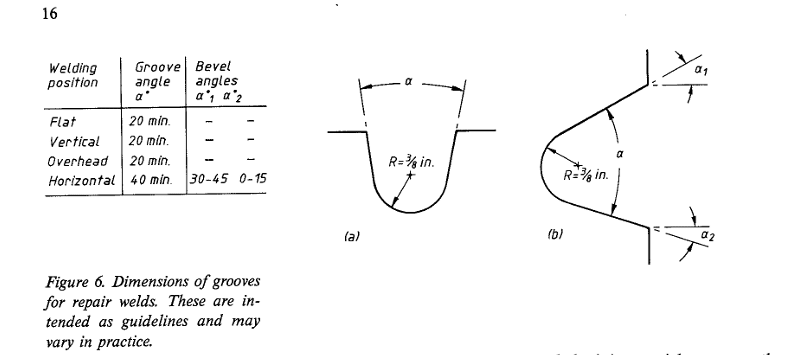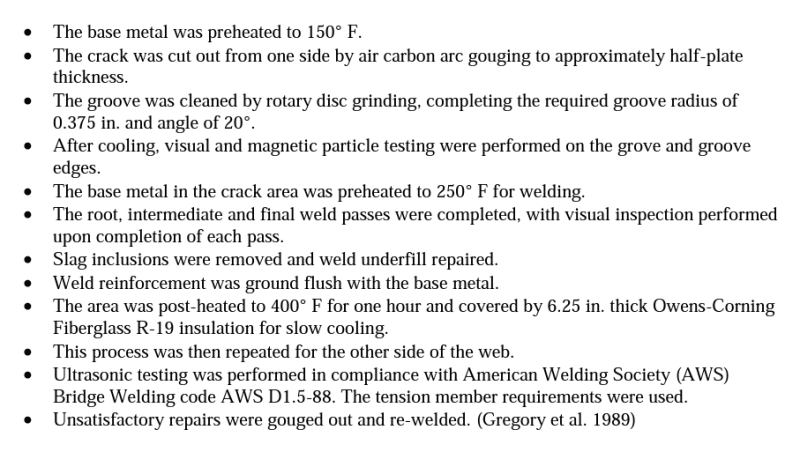Hello Everyone,
Last week the contractor started demoing a concrete deck on a single span bridge to be replaced with a new deck. The approved demolition procedure stated to saw cut the deck at the longitudinally at the center line of the girders and every 5ft transversely (approx. 7'x5' pieces) then remove it with an excavator with a thumb attachment. the original deck thickness is 8" (varies with concrete delamination 6" to 8"), as a precaution we agreed on setting the saw depth (4" to 5") to avoid any unintentional scarring of the girders. but they still managed to scare and dent the girders really bad. at some locations they cut through the full thickness of the cover plate and the 2 back to back angles that forms the flange.
Attached is some pictures of the damages.
I'm trying to fix the damages with the least amount of work to prevent any delay, any suggestion is highly appreciated.
Thank you all for always being very helpful and I wish I can help the same way one day.
(DrZoidberWoop) thank you for you reply on the original post, I deleted it for the reason you mentioned.
Sr. Project Engineer
MSc in Civil Engineering
Last week the contractor started demoing a concrete deck on a single span bridge to be replaced with a new deck. The approved demolition procedure stated to saw cut the deck at the longitudinally at the center line of the girders and every 5ft transversely (approx. 7'x5' pieces) then remove it with an excavator with a thumb attachment. the original deck thickness is 8" (varies with concrete delamination 6" to 8"), as a precaution we agreed on setting the saw depth (4" to 5") to avoid any unintentional scarring of the girders. but they still managed to scare and dent the girders really bad. at some locations they cut through the full thickness of the cover plate and the 2 back to back angles that forms the flange.
Attached is some pictures of the damages.
I'm trying to fix the damages with the least amount of work to prevent any delay, any suggestion is highly appreciated.
Thank you all for always being very helpful and I wish I can help the same way one day.
(DrZoidberWoop) thank you for you reply on the original post, I deleted it for the reason you mentioned.
Sr. Project Engineer
MSc in Civil Engineering



![[smile] [smile] [smile]](/data/assets/smilies/smile.gif)